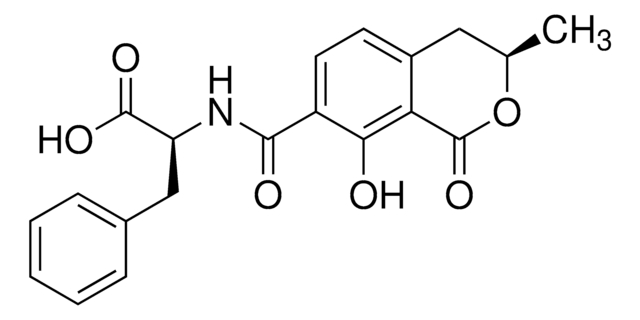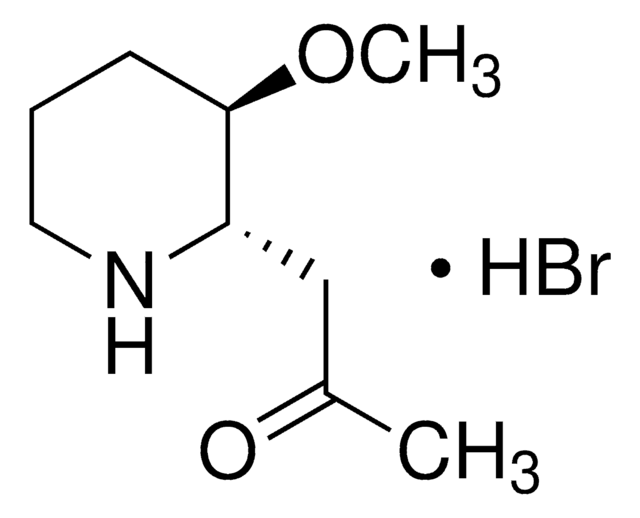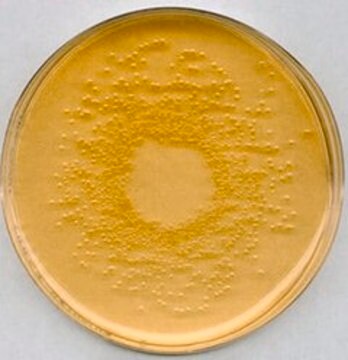MABS482
Anti-PL Scramblase 1 Antibody, clone 1A8
clone 1A8, from mouse
Sinônimo(s):
Phospholipid scramblase 1, PL Scramblase 1, Ca(2+)-dependent phospholipid scramblase 1, Erythrocyte phospholipid scramblase, MmTRA1b
About This Item
Produtos recomendados
fonte biológica
mouse
Nível de qualidade
forma do anticorpo
purified antibody
tipo de produto de anticorpo
primary antibodies
clone
1A8, monoclonal
reatividade de espécies
human, mouse
técnica(s)
immunohistochemistry: suitable
immunoprecipitation (IP): suitable
western blot: suitable
Isotipo
IgG2bκ
nº de adesão NCBI
nº de adesão UniProt
Condições de expedição
wet ice
modificação pós-traducional do alvo
unmodified
Informações sobre genes
human ... PLSCR1(5359)
Descrição geral
Imunogênio
Aplicação
Signaling
Signaling Neuroscience
Immunohistochemistry Analysis: A 1:50 dilution from a representative lot detected PL Scramblase 1 in mouse colon tissue.
Western Blotting Analysis: A representative lot detected PL scramblase 1 in platelets and lung tissue from wild-type and PLSCR3-/-, but not PLSCR1-/-, mice, while little or no PL scramblase 1 was detected in adipocyte or muscle samples from wild-type or the knockout animals (Wiedmer, T., et al. (2004). Proc Natl Acad Sci USA. 101(36):13296-13301).
Western Blotting Analysis: A representative lot detected retroviral-mediated ectopic expression of murine PLSCR1 in SCF-ER-Hoxb8-immortalized myeloid progenitor cells from PLSCR1−/− mice (Chen, C.W., et al. (2011). J Leukoc Biol. 90(2):221-233).
Immunprecipitation Analysis: A representative lot immunoprecipitated PL scramblase 1 from murine bone marrow-derived mast cells (BMMCs) following IgE receptor activation. Tyrosine phosphorylation of PL scramblase 1 was then checked by Western blotting with clone 4G10 (Kassas, A., et al. (2014). PLoS One. 9(10):e109800).
Qualidade
Western Blotting Analysis: 1.0 µg/mL of this antibody detected PL Scramblase 1 in 10 µg of HeLa cell lysate.
Descrição-alvo
forma física
Armazenamento e estabilidade
Outras notas
Exoneração de responsabilidade
Não está encontrando o produto certo?
Experimente o nosso Ferramenta de seleção de produtos.
Código de classe de armazenamento
12 - Non Combustible Liquids
Classe de risco de água (WGK)
WGK 1
Ponto de fulgor (°F)
Not applicable
Ponto de fulgor (°C)
Not applicable
Certificados de análise (COA)
Busque Certificados de análise (COA) digitando o Número do Lote do produto. Os números de lote e remessa podem ser encontrados no rótulo de um produto após a palavra “Lot” ou “Batch”.
Já possui este produto?
Encontre a documentação dos produtos que você adquiriu recentemente na biblioteca de documentos.
Nossa equipe de cientistas tem experiência em todas as áreas de pesquisa, incluindo Life Sciences, ciência de materiais, síntese química, cromatografia, química analítica e muitas outras.
Entre em contato com a assistência técnica






